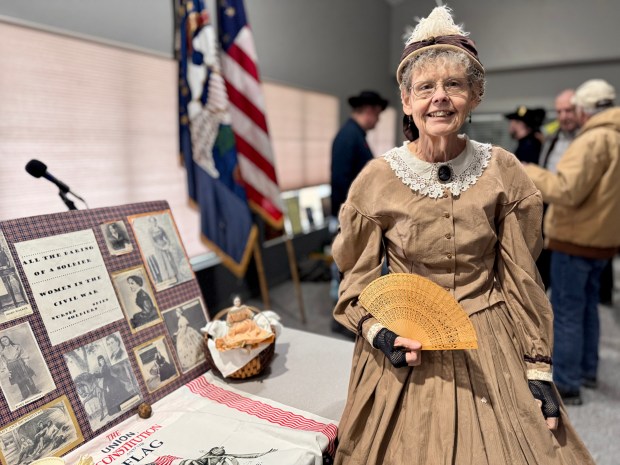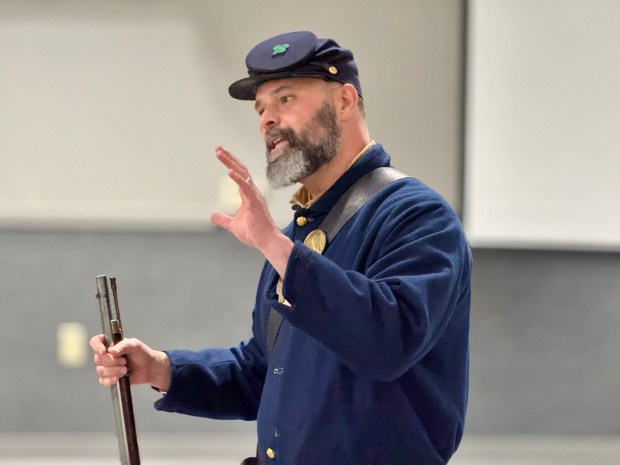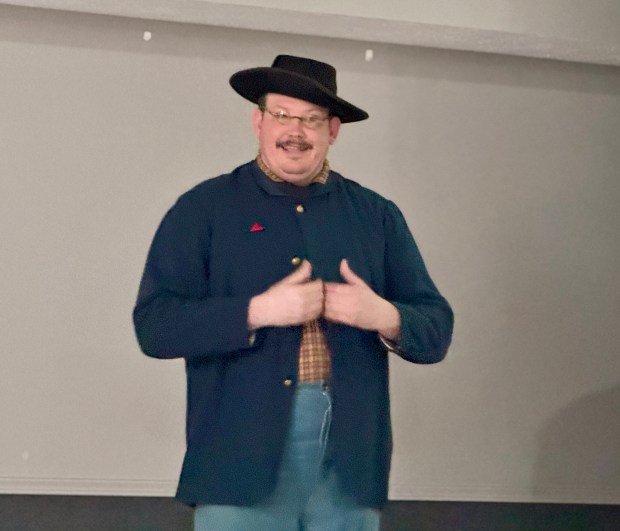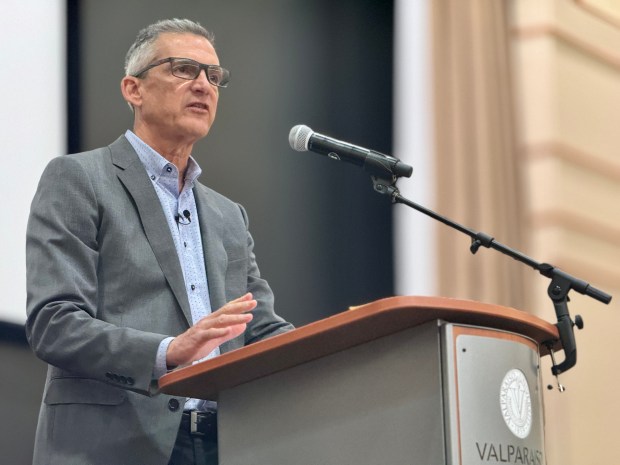Even longtime Civil War history buffs learned something new at the Kankakee Valley Historical Society’s event Saturday in Kouts.
Tom Wojcinski, a Civil War reenactor, told the harrowing story of Private Jack Miller, a member of the 9th Indiana Volunteers, who earned the nickname Center Shot.
Miller was shot in the forehead and left for dead.
“My head had swelled so bad it shut my eyes, and I could see to get along only by raising the lid of my eye and looking ahead, then going on ‘til I ran afoul of something,” Miller said.
“I was begging the surgeons to operate on my head, but they all refused. I suffered for nine months, then I got a furlough to go home to Logansport.”
The musket ball was finally removed 17 years after Miller was wounded.
“Miller would suffer from delusions while he had the musket ball on his head,” sometimes marching back and forth in the streets of Logansport and reliving the war, Wojcinski said. If Miller got a head cold, he would have excruciating pain.
Once the operation to remove the musket ball was completed, he lived a fairly normal life, dying in his 80s, Wojcinski said.
Miller’s tale is just one of Wojcinski’s stories about that Indiana regiment’s campaigns during the war.
Tom Schmitt, Indiana commander for the Sons of Union Veterans of the Civil War, served in the U.S. Marine Corps, his inspiration for telling about the Marines’ service during the war.
About 40% of the Marines’ officers sided with the South, he said.
On the North’s side, the Marines initially were supposed to fight within 35 miles of the sea, a distinction that faded as the war raged on, Schmitt said.
Marines served aboard Navy ships, acting as sharpshooters in the rigging, firing down on the enemy as the ships rocked on the waves.
They were instructed to try to target the “powder monkeys,” young boys who relayed powder and shot to the sailors operating the ships’ big guns. Marines themselves carried about 60 rounds of ammo with them, Schmitt said.

The powder monkeys were orphans who were, in effect, purchased from orphanages by the Navy to serve aboard ship, he said.
When the boys grew too big, they weren’t useful for that purpose anymore. That’s why the officers didn’t want to feed them too much, Schmitt said.
Southerners noticed the poor treatment those boys received from U.S. Navy officers. “You’re doing the same thing, only you’re doing it with white people,” the rebels would say.
The Navy would counter that the boys were learning a trade, but few of them wanted to stay on as sailors, Schmitt said.
Chesterton High School history teacher Bob DeRuntz told of his annual Civil War encampment, where his students get a sense of what it was like to live during the war.
The encampment includes an open fire where salt pork and bean stew are being cooked. Tents are set up, and soldiers’ equipment and weapons are all laid out too, transporting about 500 students to life in 1862 during the course of two days.

“Most of my students have very rarely attended any sort of living history. A lot of students don’t go to those sort of presentations anymore,” DeRuntz said.
While they’re sitting on bales of hay arranged like an amphitheater, they can smell the salt pork cooking on a campfire. “I’m sure they’re looking forward to tasting it, and I think that’s why this lesson for them is so memorable.”
“I see students from 20 years ago. The first thing they ask me is are you still doing the Civil War campaign,” he said. “I think it’s because they see it, they hear it, they touch it, they taste it and smell it. It just touches all these senses. It’s truly experiential learning.”
DeRuntz, a longtime history teacher, said he learned facts he didn’t know from the other presenters at the Kankakee Valley Historical Society event Saturday.
Doug Ross is a freelance reporter for the Post-Tribune.





